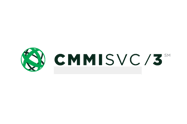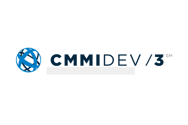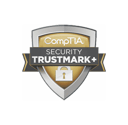The European Union is implementing a strict data privacy law, General Data Protection Regulation, or G.D.P.R and Facebook is currently under fire for its mishandling of personal data.
One key component of this larger discussion is data security. Utilizing only a username and password to access information systems is increasingly insecure. Advanced hacking tools and decrypting methods make this paradigm vulnerable to attacks. Multifactor authentication is a critical step in securing key system resources from internal/external threats.
Multi-Factor Authentication Benefits
Improve Security
The primary benefit of Multi-Factor Authentication (MFA) is additional security by adding protection in layers with a secondary or tertiary authentication requirement. With more layers/factors in place, it becomes harder for an intruder to gain access to systems. This includes protecting data and other proprietary information. In the long run, you protect both employees and customers better through Multi-Factor Authentication.
Achieve Compliance
A second benefit of Multi-Factor Authentication is that it meets the necessary compliance requirements that are enforced by NIST 800-171. Meeting these compliance requirements allows your company to continue working on certain contracts that require compliance and also create new opportunities based on the experiences from performing that work.
Increase Flexibility and Productivity
The ability to remove the burden of passwords by replacing them with alternative authentication mechanisms has the potential to increase productivity and introduce a simpler authentication experience. In the right environment and situation, there could even be an opportunity for a potential reduction in operational costs due to the administrative overhead associated with managing/maintaining user accounts.
Factors to Consider Before Implementing a Multi-Factor Environment
Implementing Multi-factor Authentication should be planned and coordinated based on your requirements. Understanding your situation and planning accordingly is essential in this process.
Platforms
Ask yourself these questions:
- Which operating systems are you running? Windows, Macintosh, and Linux systems may all have different available solutions.
- Do you have a requirement for Mobile support? Survey your assets before you begin.
Cost
The necessary tools for implementing and maintaining Multi-Factor Authentication cost money but so does the implementation and support of the product. Do you have the resources in place to support the right tool or will you pay for a service provider? Think both short- and long-term when reviewing costs.
User Experience and Complexity
Solutions may range in complexity and hardware. Do you want retina scanners, fingerprint scanners, key fobs? Consider your user base when picking a solution. Not everyone is comfortable with every kind of authentication. The ways users access systems and technical factors for establishing authentication may help identify or eliminate potential solutions.
Contingency and Backup
What happens if the Internet is down or you cannot access your second factor for authentication? Consider contingency operations in the event of outages or system failures.
AEM can be a valuable resource in planning for Multi-Factor Authentication. We have completed substantial research and tested multiple tools. We can help ask and answer the right questions before you make important decisions which impact the entire organization.
Recommended Resources
https://blog.centrify.com/time-to-implement-multi-factor-authentication/















